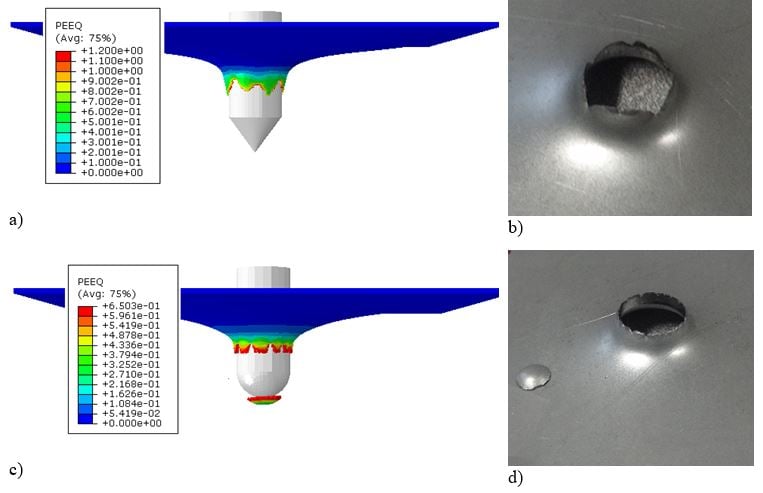Introduction
The latest release of Abaqus, version 2023HF2 brings a set of new features and enhancements. Among these are some particularly noteworthy additions, including the slurry transport simulation, which allows for the accurate modeling of fluid flow through a mixture of solids and liquids. Another significant addition is the Progressive Release eXplicit-VCCT method, which improves the accuracy and efficiency of delamination or crack propagation simulation. Additionally, there are new cure kinetics models available, including the Grindling model and user-defined models, which enhance the prediction of shrinkage and residual stresses during the curing process of thermosetting polymers. The Valanis-Landel model now allows for the definition of deviatoric response based on uniaxial and biaxial tensile test data. These are just a few of the many new features and enhancements available in Abaqus 2023HF2. If you're interested in learning more about these or a few other updates welcome to read a short article.
Slurry Transport Simulation
Abaqus 2023HF2 has introduced a new functionality for slurry transport simulation. Slurry is a mixture of dense solids suspended in a liquid, often used for transporting solids or separating minerals. Abaqus/Standard now offers enhanced fluid pipe elements and fluid pipe connector elements that can model pressure losses due to slurry transport. These elements can also handle the transport of proppants-laden Newtonian and non-Newtonian slurries, treating the slurry concentration as an additional degree of freedom in the field equations. This is especially useful for oil and gas applications where hydraulic fracture can be driven by coupling with cohesive or enriched elements. The modeling of hydraulically driven fracture has been extended to include the transport of solids-laden slurries within fractured surfaces. You can define initial slurry concentration values and use the user subroutine UCOHESIVEOFFSET to specify an offset for the traction-separation response in cohesive elements that support fluid or slurry transport. This allows you to prevent crack surfaces from closing under external loading conditions. The new Abaqus functionality in the area of slurry transport simulation opens up new possibilities for modeling slurry-based applications.
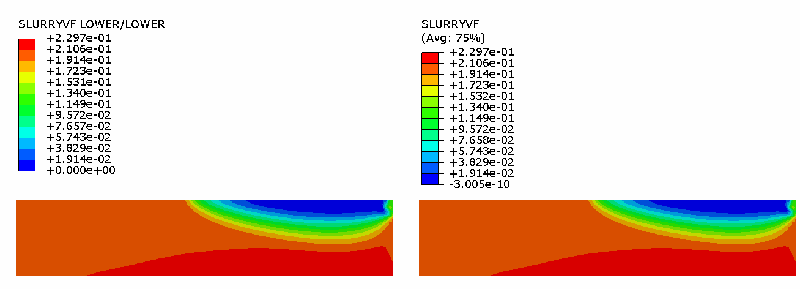
Fig. 1. Slot test from Abaqus doc – contour plots of slurry concentration (volume fraction of proppants in slurry) inside a slot.
Progressive Release Explicit-vcct Method
New version of Abaqus offers a new functionality called the Progressive Release eXplicit-VCCT method (PRX-VCCT), which is designed to model material delamination or crack propagation. PRX-VCCT criterion is a modified version of the VCCT criterion, which includes a progressive nodal release strategy within the conventional VCCT framework. The increment in delamination propagation is determined explicitly based on the energy release rates calculated in the previous time increment. This approach leads to better convergence characteristics and produces a smoother and cleaner crack/delamination front and load-displacement response. This feature is especially useful for modeling cracks or delamination propagating in a predominantly shear mode. With the PRX-VCCT method, Abaqus users can now simulate delamination and crack propagation with greater accuracy and efficiency.

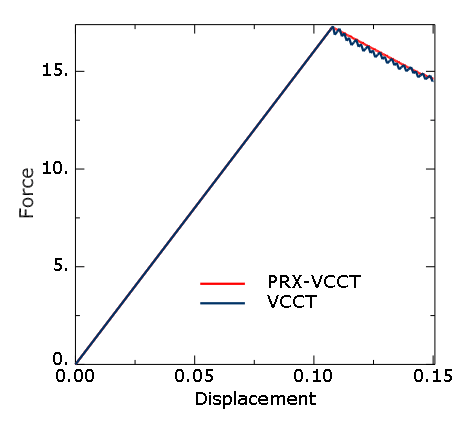
Fig. 2. Comparison of the results using VCCT and PRX-VCCT for a three-dimensional double-cantilever beam model from Abaqus doc.
If you are interested in detail about Progressive Release eXplicit-VCCT method, we recommend to read the paper “An explicit delamination propagation algorithm to simulate delamination growth under quasi-static and fatigue loading without re-meshing using virtual crack closure technique and progressive nodal release”.
Steady-state Dynamic Solver Performance Improvement
Abaqus has recently introduced a new performance enhancement for its mode-based steady-state dynamic solver. By internally splitting the frequency range into tasks, the solver can now run multiple tasks simultaneously, resulting in a significant reduction in execution time for mode-based steady-state dynamic analysis. This technique assigns tasks to specific cores when the analysis uses all the host's cores, thereby improving the overall performance of the solver.
The solver internally calculates the total number of tasks required based on the underlying architecture and adjusts this number to account for available memory. These enhancements have a particularly significant impact on hardware with a high core count.
Using this approach, you can also manually split your steady-state dynamic analysis into multiple independent jobs and run them simultaneously. You do not need to modify the job input file, but you must specify the total number of partitions and the current partition number for each analysis. Abaqus has introduced new command-line options, ssd_split, and ssd_partition, to support this new technique. Additionally, the abaqus odbcombine utility can be used to combine the results obtained from different frequency partitions. Running the analyses for different partitions simultaneously can help achieve a performance gain especially on clusters. By using this technique, Abaqus users can expect improved performance and reduced analysis time, especially on hardware with a high core count.
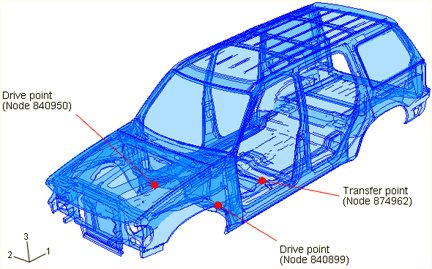
Fig. 3. Body-In-White model of sport utility vehicle from Abaqus doc.
New Cure Kinetics Models - Grindling and User-defined
The latest release of Abaqus introduces new cure kinetics modeling capabilities to enhance the prediction of shrinkage and residual stresses during the curing process of thermosetting polymers. Curing plays a critical role in the use of thermosetting polymers such as adhesives, and it is usually activated at elevated temperatures. The process is exothermic and generates heat as the curing reaction progresses, leading to permanent shrinkage strains due to the formation of chemical bonds. The thermal and shrinkage strains that develop during the process can result in residual stresses that can be detrimental to the adherents or induce warpage and deformation in bonded assemblies. In earlier versions, only two kinetics models (Kamal and tabular) were available to describe the evolution of the degree of cure. However, the new enhancements extend these capabilities with two new models: the Grindling model and a general capability to support user-defined forms of cure kinetics via user subroutine UCURE.
The Grindling model shows similar behavior to the Kamal model at larger temperatures when the reaction kinetics are chemically controlled. However, unlike the Kamal model, it can also predict the transition to diffusion-controlled reaction kinematics due to vitrification that often occurs during isothermal curing and are characterized by a much slower cure rate.
Moreover, the user-defined cure kinetics capability allows the implementation of other functional forms of cure kinetics not directly supported in Abaqus. It requires the specification of the degree of cure rate and its derivatives with respect to temperature and degree of cure.
Defining Deviatoric Response of the Valanis-landel Hyperelastic Model
Abaqus 2023HF2 allows for the definition of the deviatoric response of the Valanis-Landel hyperelastic model using uniaxial and biaxial tensile test data. The Valanis-Landel model is an isotropic hyperelastic model that requires numerical determination of the strain energy function based on test data provided by the user. With this enhancement, it is now possible to reproduce both compressive and tensile test data exactly using only tensile tests. Previously, users were limited to defining the deviatoric response using only tensile and compressive uniaxial test data. By providing tensile uniaxial and biaxial test data, this method can convert the tensile biaxial test data into compressive uniaxial test data, which is then used to define the compressive behavior of the material. This approach is more convenient as tension tests are generally easier to perform compared to compression uniaxial and biaxial tests. Consequently, it is more likely that these types of data are readily available. This new capability is especially useful in the study of isotropic hyperelastic models, and a new test example illustrating the use of the Valanis-Landel hyperelasticity models is now available in Abaqus.
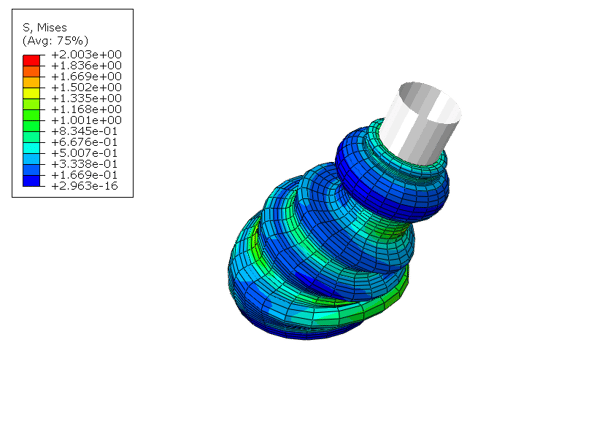
Fig. 4. Stress distribution in the boot seal from Abaqus doc in deformed configuration using Valanis-Landel hyperelastic model defined using uniaxial and biaxial tensile test data.
Geometrical Representation of the Substructure for Deformed Shape Visualizations
You can now define in Abaqus a coarse geometrical representation of the substructure and use it to visualize the deformed shape of the substructure in the usage analysis. This is achieved by specifying a set of elements in the substructure generation analysis to define the coarse geometrical representation of the substructure. The element set data is stored in the substructure database and can be used in the substructure usage analysis to visualize the deformed shape of the substructure, if you activate the visualization. The visualization is controlled by setting the substructure property.
When substructure visualization is active in the usage analysis, Abaqus/Standard automatically creates display elements representing the substructures. The nodes of these display elements are not connected to the nodes of the elements in the usage analysis mesh and do not affect the simulation results. The nodes of the display elements have only translational displacement degrees of freedom, and the display mesh can represent the deformed configuration of the substructure during the analysis.
The substructure display functionality is supported in static, dynamic, eigenvalue extraction, and linear dynamic analysis procedures. This enhancement allows for a better understanding of the behavior of the substructure during the simulation and can aid in the interpretation of the results.
Import
The latest enhancement to the import feature in Abaqus introduces a new parameter called STEP NAME. This parameter enables you to select the specific step to import by simply specifying its name. This feature allows you to choose an import step based on a descriptive name, making it much easier to identify the step you want to use. With the STEP NAME parameter, you no longer have to rely on an unintuitive number to identify the step.
Another benefit of the STEP NAME parameter is that it simplifies the process of selecting the desired step in a sequence of chained import analyses. In these cases, the step numbers follow the progression of the analyses, which can make it challenging to keep track of which step to import. With the new STEP NAME parameter, you can simply specify the name of the desired step, making it much simpler to select the appropriate step.
Overall, this enhancement streamlines the import process in Abaqus, making it more user-friendly and efficient. The STEP NAME parameter makes it easier to identify and select the desired step, especially in complex import analyses.
Uniform Coupling Constraints
The latest release of Abaqus introduces a new feature for coupling constraints called uniform coupling which is addressed for nonmechanical analysis. This type of constraint ensures that the degrees of freedom of the coupling nodes have the same values as those of the reference node. Only the required degrees of freedom are activated at the reference node. The uniform constraints are imposed by eliminating degrees of freedom at the coupling nodes. To apply uniform coupling constraints, the user can utilize the new keyword *UNIFORM in the input file.
Overall, Abaqus 2023HF2 represents a significant step forward in the world of simulation and analysis – 4 new keywords, 30 keywords with new parameters and 64 closed BRs.
Feel free to contact us for more information: https://www.technia.com/simulation/








